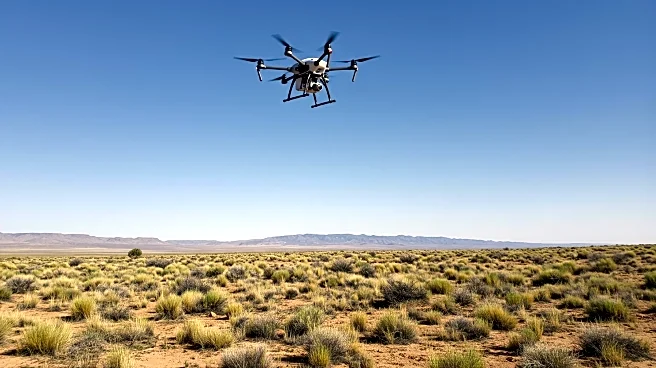What is the story about?
What's Happening?
A study utilizing UAV hyperspectral multimodal data combined with Encoder-CNN models has been conducted to assess plant diversity in degraded desert grasslands. The research focused on dimensionality reduction of hyperspectral images using Random Forest algorithms to identify significant wavelengths for vegetation classification. The study compared various models, including CNN and Transformer-based approaches, finding that the Encoder-CNN model achieved the highest classification accuracy. The research highlights the importance of multimodal data in improving classification results and provides insights into vegetation mapping and diversity indicators in desert ecosystems.
Why It's Important?
This study is crucial for ecological restoration efforts in desert grasslands, offering a method to accurately assess plant diversity and inform targeted restoration strategies. By identifying species composition and ecological characteristics, managers can prioritize areas for restoration and optimize strategies based on vegetation health and growth patterns. The integration of hyperspectral data and deep learning models enhances the precision of biodiversity assessments, supporting sustainable land management and conservation efforts.
What's Next?
Future research may focus on integrating additional data sources, such as thermal infrared remote sensing, to further improve classification accuracy and address misclassification issues. The study suggests that ongoing ecological monitoring can help adapt management strategies to dynamic environmental conditions, ensuring effective restoration practices. Continued advancements in remote sensing and AI technologies are expected to play a significant role in ecological research and land management.
Beyond the Headlines
The study underscores the challenge of cross-regional generalization due to ecological heterogeneity in desert steppe ecosystems. Differences in vegetation composition and soil properties across regions affect model performance, highlighting the need for localized data and tailored approaches. The research also emphasizes the ecological significance of accurate plant diversity assessments in guiding restoration decisions and enhancing ecosystem resilience.
AI Generated Content
Do you find this article useful?













